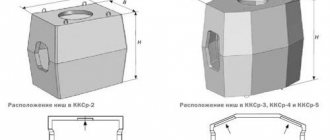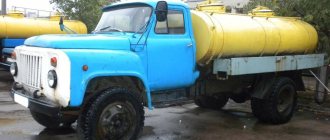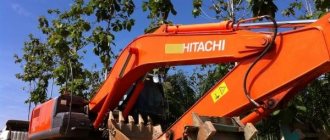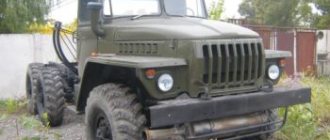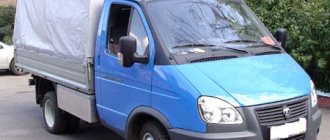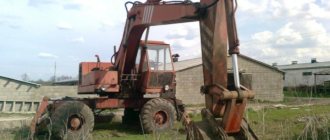The forklift is currently one of the most common and sought-after types of lifting equipment, due to its versatility, it is used in various fields of professional human activity around the world. With the help of this technique, the speed and efficiency of operations for moving, loading, unloading various goods on pallets, as well as their subsequent stacking are increased, which helps to optimize work processes and reduce the use of manual labor. Thus, forklifts are used both inside warehouses of various sizes and in the territories adjacent to them, as well as in ports, customs terminals, railway stations, construction and trade facilities, in public utilities and agriculture.
Now forklifts are in the product portfolios of almost every major manufacturer of warehouse equipment. A wide range of models that differ in a number of factors provides consumers with the opportunity to purchase the optimal tool for solving production problems, based on the field of activity and operating conditions. For example, for use in narrow aisles and in rooms with a high density of shelving systems, special compact models are provided, which are characterized by mobility and excellent speed of movement. Manufacturers also offer both models designed to work at high altitudes without the need for horizontal movement of goods over long distances, as well as off-road versions of loaders designed to overcome long distances on difficult surfaces when loaded.
However, it is often just because of such a variety that the choice becomes extremely difficult, and therefore, so that the money is not wasted, before buying, you need to know which parameters you should pay attention to in the first place. Today we will talk directly about the technical characteristics of the forklifts themselves.
Power unit type
The engine is the heart of the forklift and its type, model and specifications directly affect the overall performance of the machine.
Based on the type of drive, all modern loaders are divided into forklifts and electric.
Within the first class, there is also a division according to the type of fuel used into gasoline, gas, gas-gasoline and diesel models. The key characteristics of power plants in this category include power, volume, as well as environmental friendliness. So, for work in open areas and inside well-ventilated rooms, loaders with diesel or gasoline engines are more often used, and for indoor use, gas or gas-gasoline models or electric ones are more suitable, which are currently the most environmentally friendly and economical option.
In turn, in the class of electric forklifts, there are samples with power units with direct or alternating current technology, as well as with battery positioning from above or from the side. The parameters that play a key role in the selection of electric forklifts are the voltage, type, size and capacity of the battery. In turn, lead-acid, gel, lithium-ion batteries are isolated.
Types of forklifts
They are divided into several types, depending on the technical characteristics underlying the classification. Among the main parameters that differ between different models:
Number of wheels
According to the number of supporting wheels, loaders are divided into:
- four-support;
- tricycle.
Tricycles have one wheel on the rear axle (or two, but close to each other), which provides high maneuverability, but less lateral stability and requires a flat area. Four-wheels are less maneuverable, but more stable, their carrying capacity is higher.
Wheel type
The loader is equipped with wheels:
- cast;
- pneumatic.
Solid tires are more economical, more durable than pneumatic tires, and are not afraid of punctures. Pneumatic are more suitable for particularly delicate movement on uneven surfaces due to better shock absorption.
engine's type
Depending on its type, loaders are distinguished:
- electrical;
- diesel;
- gas;
- gasoline.
Diesel engines are among the most common (diesel fuel is cheaper than gasoline). They are optimized to reduce noise, vibration and environmental pollution (filters). LPG engines are economical and suitable for enclosed spaces. Electric - the most environmentally friendly and safe.
Type of lifting device and its location
There are the following types:
- with a fork carriage in front (frontal);
- with forks on the side (semi-rotary);
- bucket (bucket is hung).
Permissible weight load
According to the nominal weight with which you can work, loaders are divided into:
- light (0.5 - 2 tons);
- medium (2-4 tons);
- heavy (4-10 tons);
- heavy-duty (over 10 tons).
The choice depends on the tasks to be performed. When choosing the right model, it makes sense to consider other performance factors such as maximum height and lifting speed.
Electric forklifts and forklifts often fall into separate categories.
Electric forklifts
Equipped with an electric motor and a battery, they are most often used in warehouses, indoors and in the food industry, as they do not produce exhaust, do not pollute the air.
Forklifts
Runs on diesel, petrol or natural gas. They can sometimes be seen indoors, but in the vast majority of cases they are used outdoors.
Formally, this type of loading equipment also includes stackers and reach trucks designed to work with racks of various heights - they are also equipped with forklifts as the main functional element.
The direct purpose of forklift equipment is transportation, loading and unloading operations with pallets of various types, for which it is ideally suited. But this is not all that it is capable of, its functionality can be dramatically expanded by using interchangeable devices, usually mounted. Having equipped the unit with them, it can be used for a wider range of tasks.
When choosing attachments, one should take into account its weight and the fact that the overall load capacity of the unit will decrease, it will be negatively affected by the weight of the equipment itself and the inevitable shift in the center of gravity.
Machine load capacity
Another important parameter of a forklift is the load capacity, which is in fact the starting point in the design, on which all other technical characteristics of the machine often depend, from the height of the load to the type of mast.
Allocate maximum and rated load capacity. The first is usually understood as the largest weight of the load that the machine is able to lift to a given maximum height with a fixed position of the center of gravity. The nominal load capacity is the mass of the product that the equipment is able to move to the height indicated by the manufacturer. It is noteworthy that a number of companies indicate only one type, either the maximum or the rated load capacity.
Based on the lifting capabilities, modern forklifts form several groups. So, small loaders include models with a carrying capacity of 1 to 4 tons, and the middle class includes samples, the carrying capacity ranges from 4 to 10 tons. up to 16 tons. And, finally, models with a carrying capacity of 16 tons or more are classified as heavy loaders. Another important parameter depends on the carrying capacity - the lifting height. Now on the world market there are models that can move loads to a height of 3 to 7 m.
Loader capacity, what you need to know about it?
Warehouse work of movement and warehousing of goods is carried out, as a rule, by forklifts. The use of a loader allows you to store goods, lifting it to a certain height and moving it over considerable distances for unloading/loading.
The forklift market is diverse and there is an opportunity to choose the one that will meet the conditions of the upcoming work. An important characteristic of this technique is the carrying capacity. According to this criterion, loaders are divided into heavy ones. above average, medium and small.
Center of gravity position and rated load
When choosing a forklift, you should consider several criteria for carrying capacity:
- The position of the center of gravity of the lifted / moved loads (distance from the front wall of the fork grip horizontally to the center of gravity of the load).
- Nominal capacity of the loader (set weight of the load by the manufacturer with a given position of the center of gravity and the height to which the load can be lifted - W1).
The maximum allowable load weight varies and depends on the distance between the center of the front wheels and the load center of the forks. Therefore, it is not entirely correct to assume that the forklift has the specified load capacity, regardless of the position of the load on the forks.
In reality, the capacity chart (see picture) shows the center of the load instead of the distance between the center of the front wheels and the center of the load for convenience.
Capacity chart
This diagram shows the reduction in load capacity when the load center distance is greater than the nominal. The curves in the diagram are for different maximum lift heights, i.e. as the lift height increases, the load capacity decreases.
For example:
The weight of the load - 2.5 tons is within the normal load capacity of the loader with a rack height of 4.5 m and a load center equal to 100 cm from the front wall of the fork. On the diagram, find the intersection of the vertical with the load center mark 100 cm to the upper curve and the horizontal on the load scale.
According to the diagram, the maximum lifting weight at the center of 100 cm is 1.8 t, which means that the 2.5 t load is too heavy and the truck will tip over.
avtopogruzchik.ru
mast type
The mast is another significant working part of the forklift, so its characteristics, which include:
- number of sections
- minimum and maximum height,
- fork angle,
- fork adjustment drive
- carriage lift height,
should also be taken into account when choosing.
The type of fork depends on the type of mast. So, there are two-section and three-section mast designs in which the forks can have free play. It is worth paying attention to such a parameter as the speed of lifting the mast, which affects the efficiency and accuracy of work operations.
dimensions
The overall dimensions, which include height, width, and length with and without forks, determine the ability of the machine to function in areas with limited space.
Mast folded headroom is the distance from the travel surface to the top or other highest part of the forklift when the forklift is in the folded position and also when the fork carriage is in the lowered position.
Dimensions affect another important parameter - maneuverability. This technical characteristic, which serves as a guarantee of the safe operation of the machine in rooms with different configurations, depends on the turning radius and the minimum aisle width required to move the loader in the equipped state. According to the specifications, the turning radius and dimensions of the load must comply with the minimum width of the aisles in the warehouse.
Specifications
The components and assemblies of a loader largely determine its capabilities. So, the tires must match the nature of the road surface. From such, at first glance, "little things" depends on whether the loader will work successfully. The turning radius of the machine and the dimensions of the load must correspond to the minimum width of the aisles in the room. A higher lift height of the fork carriage may be needed when loading double-deck pallets in vans and rail cars. Installing a sideshift fork can quickly pay for itself by increasing the productivity of the forklift, as well as increasing the level of safety at work. With an increase in the speed of movement, either productivity increases or work safety decreases. Thanks to the smoother operation of the thyristor hydraulic controls, there is less chance of damage to the load. Of course, there is a price to pay for almost every technical solution that makes the machine more efficient and convenient, so when choosing a machine, you need to look for a reasonable combination of the desired characteristics of the loader and cost. The main parameters to be defined in this section are:
- maximum load capacity;
- rated load capacity;
- maneuverability (turning radius, minimum aisle width for a loader with a load);
- lifting mast (height with fully extended mast, lifting height of the carriage with forks, number of mast sections, increased mast inclination, increased carriage lifting height, fork adjustment drive);
- length and type of pitchfork;
- chassis type;
- electric motor (alternating or direct current, voltage, size and capacity of batteries, the way they are removed - from the side or from above, the presence of an indicator of wear of the motor brushes);
- internal combustion engine (power, brand);
- travel speed (forward with maximum load, reverse with maximum load);
- fork lifting and lowering speed (with load);
- maximum overcome rise (with load);
- force on the towing hook;
- controls for the direction of movement (pedals, levers);
- hydraulic equipment;
- controls (manual, on thyristors or transistors).



